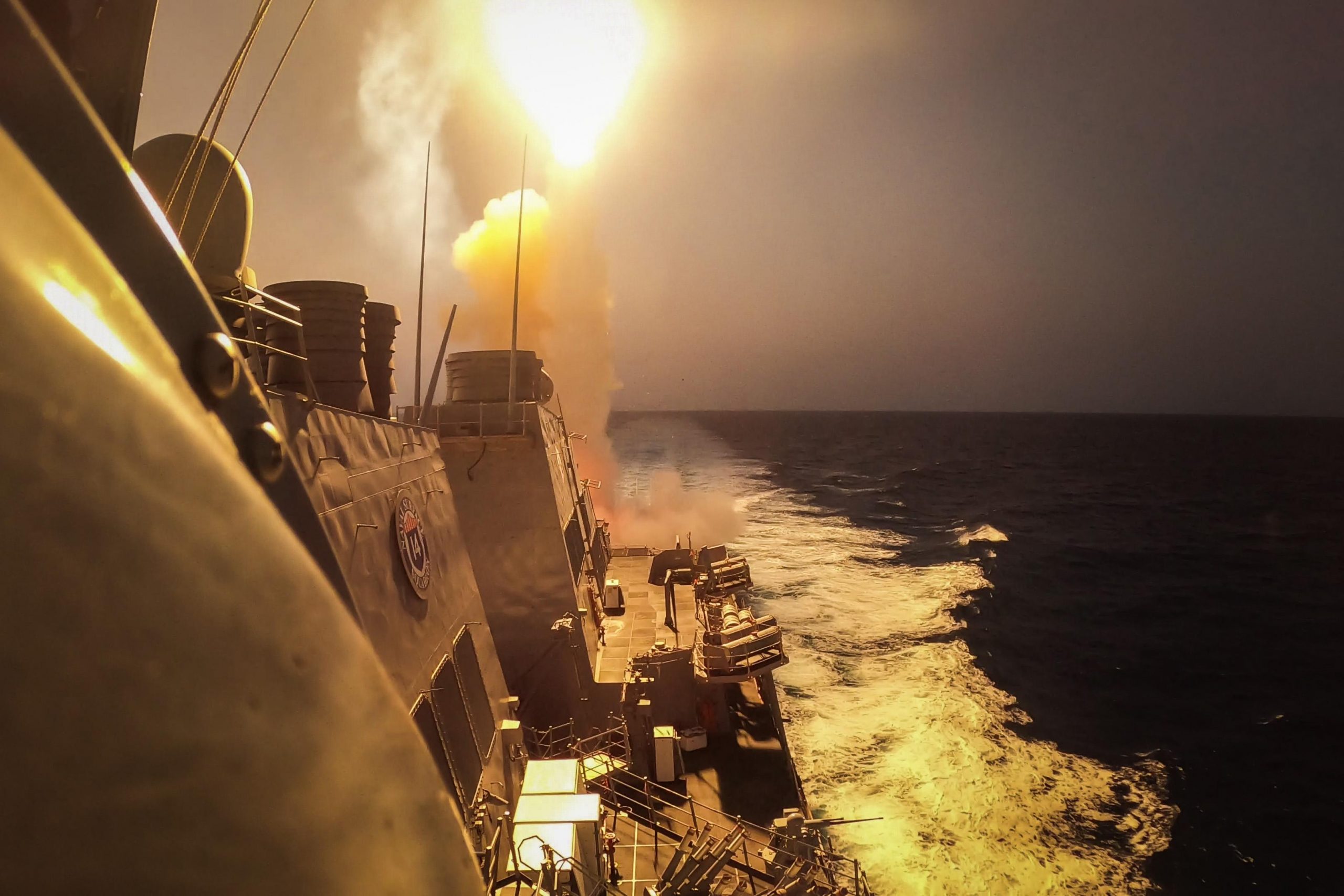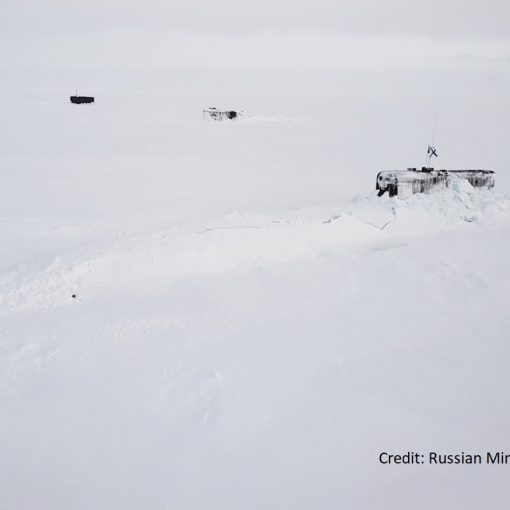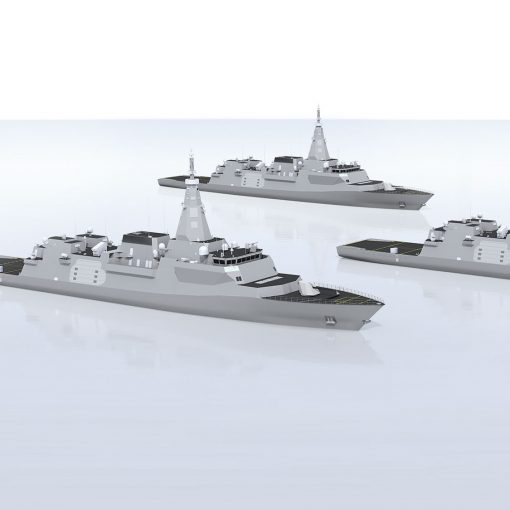By Dan Middlemiss,7 April 2024
There is a perplexing incongruity at the heart of Ottawa’s surface combatant project. On the one hand, a central rationale of our National Shipbuilding Strategy (NSS) is the premise that Canada should have a sovereign strategic capacity to build ships, especially when contentious times render foreign suppliers unreliable. On the other hand, Canada, via the NSS has become almost totally dependent on foreign suppliers for munitions stocks, particularly defensive and offensive missiles for our future warships.
One confusing aspect stems from the fact that since the late 1960s, Western military doctrine, including that of Canada and its NATO allies, has been rooted in the expectation that any future conflicts would necessitate ‘forces-in-being’ (‘come-as-you-are’ capabilities). Put simply, there would be no time to mobilize industry, including shipbuilding, à la WW2 to build military equipment for the conflicts to come. And yet, here we have the NSS, geared almost solely to peacetime circumstances and with little to no capacity to surge construction for the many conflict-like hot-spots now engulfing the world.
Another would-be source of concern is that the Canadian Surface Combatant (CSC) project is rendering the navy wholly beholden to foreign sources of supply for missiles, gun ammunition, and even the training and certification for the AEGIS weapons system. And that is happening at a time when the prospect of an unsympathetic Trump 2.0 administration, and what that might mean for US-Canada defence relations, is looming, and when our chief suppliers of munitions are experiencing shortages themselves.
In the Red Sea and the Ukraine conflicts, adversaries are using relatively cheap systems to attack their opponents. The old logic of the cost-value exchange ratio is at work in these conflicts: relatively cheap drones, cruise and even ballistic missiles are being expended in very large numbers both to overwhelm and, failing that, to exhaust, their opponents’ much more expensive counter-measures (air defence as well as land-attack missiles). Warships carry limited stocks of such counter-measures on board, and as yet, cannot safely replenish their depleted stocks at sea.
These attrition attacks seem to be working against our Western allies. US warships attacking the Houthi rebels in southern Yemen are reported to have used some 80 Tomahawk land-attack missiles in a single attack at rebel launch points on the opening day of the campaign to protect merchant and other shipping transiting the Red Sea. The significance of this can be derived from the fact that the entire US DoD procurement of Tomahawk missiles in 2023 was only 55 missiles.[1]
For a defending force, using more missiles than your government acquires over time represents a losing strategy. This unfavourable exchange ratio may tempt a defending warship commander into selecting cheaper weapons systems at more close-in ranges.[2] However, this is a highly risky approach, especially when your warship may cost $2 billion or more and the ships you are defending carry expensive cargoes. Moreover, to date the United States and its key naval allies have had to deal with asymmetric attacks from non-peer actors, and many analysts are worried that a serious military challenge from the Peoples’ Republic of China against Taiwan would rapidly exhaust Western naval missile stockpiles. Indeed, one comprehensive study suggests that the United States would run out of its long-range, precision-guided munitions in as little as one week in a Taiwan Strait conflict.[3]
In the United States, over the past decade a growing awareness of this lopsided exchange ratio and the rapid rundown of naval missile stockpiles, has led to repeated calls to redress the situation.[4] However, reaction has been slow, and it was not until late 2023 that the US DoD published an updated National Defense Industrial Strategy to rectify what has seemingly become a hollowed out and brittle defence industrial base.[5]
So how does the RCN stack up regarding its naval munitions for its future surface combatants? While information is scarce, we do know that in 2014 DND ordered some $832 million for an unspecified number of Evolved Sea Sparrow air defence missiles for its ageing warships.[6] Ottawa has also committed to spending $650M on 100 Standard Missile 2 (SM-2) Block IIIC air defence missiles and 100 MK 13 Vertical Launch Systems (VLS) under a Foreign Military Sales agreement with the United States.[7] Early plans for the CSC also included shorter-range Sea Ceptor air defence missiles and launchers from the United Kingdom, and Naval Strike Missiles and launchers from Norway. To date, there are no confirmed reports about the numbers of missiles and their costs, nor about when contracts would be signed. There has also been some speculation that DND would be acquiring Tomahawk missiles for the new frigates, but this would necessitate design changes in the VLS cells, which seems unlikely at least for the first batch of warships, and would mean Canada would have to join the end of a very long queue of militaries wanting these land-attack missiles.[8]
Canada is currently completely dependent on increasingly overstretched foreign companies for its major warship munitions, and does not appear to be stockpiling a very large arsenal of missiles for the future. Thus it is hard to escape the conclusion that our navy would very quickly exhaust its entire missile ordnance in any serious maritime conflict, has no effective anti-ship and land-attack missiles, and would be unable to re-stock in a timely manner. Nor does Canada have any plans to update its decades-old defence industrial strategy. Canada’s approach to its forthcoming CSC is based more on hope in the goodwill and forbearance of friend and foe alike, rather than on prudent preparations for a troubled world ahead.
Notes
[1]. Mackenzie Eaglen, “Why Is the U.S. Navy Running Out of Tomahawk Cruise Missiles?”, The National Interest, American Enterprise Institute, (13 February 2024). Accessed at: https://www.aei.org/op-eds/why-is-the-u-s-navy-running-out-of-tomahawk-cruise-missiles/; also, Mackenzie Eaglen, “The U.S. Navy Doesn’t Have Enough Air Defense Missiles”, The National Interest, American Enterprise Institute, (4 January 2024). Accessed at: https://www.aei.org/op-eds/the-u-s-navy-doesnt-have-enough-air-defense-missiles/
[2]. Geoff Ziezulewicz, “What he Navy is learning from its fight in the Red Sea”, Navy Times, (18 January 2024). Accessed at: https://www.navytimes.com/news/your-navy/2024/01/18/what-the-navy-is-learning-from-its-fight-in-the-red-sea/
[3]. Seth G. Jones, Empty Bins in a Wartime Environment:The Challenge to the U.S. Defense Industrial Base, Center for Strategic and International Studies, (23 January 2023). Accessed at: https://www.csis.org/analysis/empty-bins-wartime-environment-challenge-us-defense-industrial-base
[4]. Daniel Gouré, “The U.S. Military Needs To Alter The Cost Exchange Ratio In Future Conflicts”, The Lexington Institute, (16 October 2013). Accessed at: https://www.lexingtoninstitute.org/the-u-s-military-needs-to-alter-the-cost-exchange-ratio-in-future-conflicts/; see also, Harlan Ullman, “To Deter or Win Future Wars, the United States Must Reverse the Cost-Exchange Ratio”, U.S. Naval Institute, Proceedings, Vol.147, No.5, (May 2021). Accessed at: https://www.usni.org/magazines/proceedings/2021/may/deter-or-win-future-wars-united-states-must-reverse-cost-exchange
[5]. U.S., Department of Defense, National Defense Industrial Strategy, (16 November 2023).
[6]. Michael Den Tandt, “Tories approve $800M sole-source purchase of next-gen Navy missiles, sources say”, National Post, (11 October 2014). Ottawa paid an advance of $27M for these in 2017, and began receiving the missiles in 2020. While the missiles were clearly intended for the CSC, their cost likely will not be charged against the CSC project.
[7]. David Pugliese, “Canada spending $650 million on U.S. missiles for new warships”, Ottawa Citizen, (6 November 2020).
[8]. The RCN might be able to use its obsolescent Harpoon anti-ship missiles, if it can get them re-certified. However, the recent incident with a Danish Harpoon missile may prove to be a warning about resorting to older stocks of missiles. See, “Technical error with navy missile spurs authorities to issue warning in Denmark”, Associated Press, (4 April 2024).






One thought on “The CSC and the Cost-Value Exchange Ratio”
Dan
Bravo!
This is a useful expose of poor Canadian planning. Please note that the melting Arctic changes our strategic position. Canada is no longer in the rear, but rather has become the front line! Past rear-area thinking won’t deter international pirates seeking the $T20 treasure in undersea metals. Canada is has become the front line in a naval-conflict world.
Politicians may find that hard to square with past logic, but the pirates won’t care! Canada’s strategic position (behind the USA, or Britain) no longer applies in a melted Arctic. The rush to find and claim the undersea wealth will surely create some pushing and shoving. The 100 missiles amongst 14 ships are unlikely to deter the bad guys. It’s academic anyway, since the CSC ships are unbuilt, we’ll use our 12 x 30-year old Halifaxes!
Thank you for staying on top of this! I doubt that our politicians have grasped the ‘sea-change’ in our strategic position. The melting Arctic is our new front line! Since the USA is ‘behind’ Canada to the south, who else but us will challenge Arctic misbehaviour? That’s a serious naval problem for our 12 x 30 year-old ships with international tasks.
Oh, by the way, we’ve claimed up to Russia’s 200nm limit to extend our Area of Operational Responsibility somewhat!
Peter